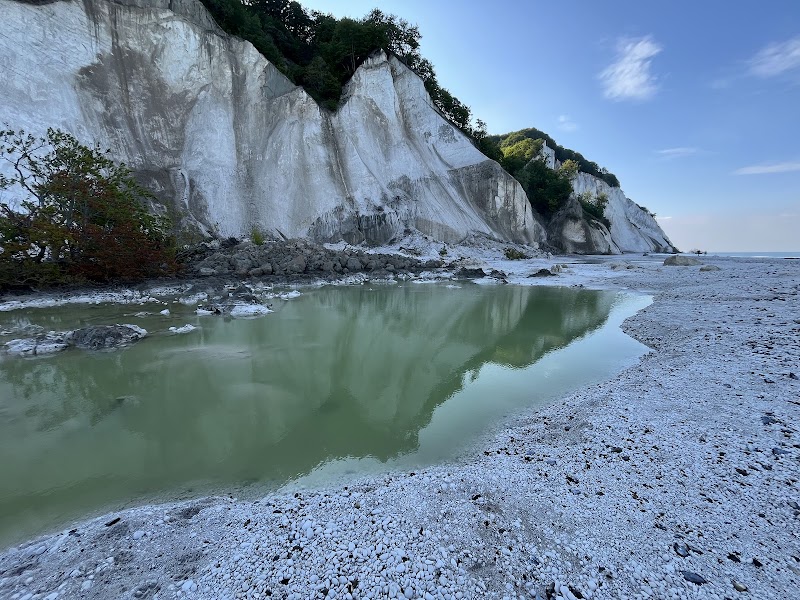
Summer Outdoor Markets in Demmin: A Practical Adventure through Local Flavor
Explore Demmin's local summer outdoor markets—vibrant hubs where fresh produce, crafts, and community blend seamlessly. This guide offers practical tips for timing your visit, what to expect, and how to connect fully with the rhythms of local life.
Arrive Early for Best Selection
Markets are freshest and fullest before noon, giving you pick of local produce and crafts before crowds grow.
Wear Comfortable, Weather-Appropriate Shoes
Expect cobblestone roads and occasional grassy areas; sturdy shoes protect your feet through all market zones.
Stay Hydrated Under the Summer Sun
Limited shade makes heat a factor; bring a refillable water bottle to stay refreshed during your visit.
Bring Reusable Bags for Purchases
Sustainability is part of the market’s spirit; reusable bags help reduce plastic waste and make carrying easier.
Summer Outdoor Markets in Demmin: A Practical Adventure through Local Flavor
In the heart of Mecklenburg-Vorpommern, Demmin’s summer outdoor markets invite visitors into a space alive with movement, colors, and scents. These markets are more than places to shop—they're hubs where tradition meets daily life, set against the calm hum of the Trebel River pressing gently onward. Walking the streets lined with stalls demands little physical effort, but it asks for attention: to the local produce bursting with summer’s bounty, the hands shaping fresh bread, and the voices sharing stories over steaming cups of coffee.
Spread through Demmin’s historic center, each market offers a distinct rhythm. Early mornings bring the freshest vegetables and fruits—juicy strawberries, vibrant cucumbers, and fragrant herbs grown nearby. As sunlight strengthens, artisans reveal painted pottery, handcrafted textiles, and kitchen tools born from regional craftsmanship. The vibe shifts but never loses an earnest connection to place.
Planning a visit means timing your arrival just right. Markets peak from late morning until early afternoon, fitting neatly into a day marked by other local adventures—like a relaxed walk along the Trebel or exploring Demmin’s medieval architecture. Comfortable shoes suit the cobblestones and occasional patches of soft grass where vendors set up. Hydration matters; summer heat often presses firmly down, especially in the open market squares where shade is a rare guest.
Here, nature and community engage with equal force—the fly markets at the riverbank challenge your senses with the fresh catch while rooftop terraces above observe the world below, awaiting a quiet evening. Prices remain reasonable, but the true wealth lies in experiences: tasting honey direct from regional hives, sampling rye bread still warm from the oven, or catching the subtle hints of wildflowers in homemade jams.
Though the markets are friendly to all—visitors and locals alike—there’s an unspoken respect for the deeply local pace. Early risers gain the best picks; those arriving later still find music, conversation, and a lively market spirit. The environment encourages exploration and discovery without rush, reminding those who pass through that summer in Demmin is an active invitation to step inside a community fiercely itself.
Whether you come aiming to gather supplies for a riverside picnic or simply to soak in summer’s steady pulse, Demmin’s outdoor markets offer a grounded yet vivid slice of Mecklenburg-Vorpommern’s culture. They are practical stops as much as immersive experiences, guaranteeing insights as plentiful as the season’s harvest.
Nearby Trips
All Adventures
Boat Charters
Water Activities
Adventures near Demmin, Mecklenburg-Vorpommern
Discover the unique and memorable adventures that make Demmin, Mecklenburg-Vorpommern special.
Frequently Asked Questions
What types of goods can I expect at Demmin’s summer outdoor markets?
Expect fresh local produce like berries, cucumbers, tomatoes, and herbs; handmade crafts such as pottery and textiles; baked goods including rye bread; and homemade jams highlighting regional flora.
Are the markets accessible for families and older visitors?
Yes, the markets take place on mostly flat ground with accessible paths. While some cobblestones exist, these areas remain manageable for strollers and mobility aids when approached with care.
Can I find information about local culture and traditions at the market?
Absolutely. Many vendors share stories about their trades and family histories. Seasonal festivals often coincide with market days, offering performances and community gatherings that reflect Demmin’s heritage.
Is it possible to sample goods before buying?
Sampling is common with many food stalls, especially for honey, cheeses, and preserves—vendors rely on taste to build trust and connection.
Are pets allowed at the markets?
Pets on leashes are generally allowed, but due to crowds and food stalls, it’s advisable to consider your pet’s comfort and local market guidelines before bringing them.
What environmental practices do Demmin’s markets follow?
Many vendors prioritize seasonal, local produce to minimize carbon footprint, use minimal or biodegradable packaging, and encourage reusable bags to reduce plastic waste.
Recommended Gear
Comfortable Walking Shoes
Protect your feet on cobbled streets and soft grassy spots throughout the markets.
Reusable Water Bottle
Stay hydrated in open market areas with limited shade, especially during hot afternoons.
Lightweight Backpack or Tote
Carry your purchases and personal items hands-free as you explore.
Broad-Brimmed Hat
Protects against sun exposure and keeps you cooler during long market visits.
Local Insights
Hidden Gems
- "A tucked-away riverside viewpoint near the Hanseatic wall provides a calm place to enjoy market purchases with views over the Trebel River."
- "The small St.-Bartholomäi church garden offers quiet rest and the scent of summer herbs, often sourced from local market vendors."
Wildlife
- "Kingfishers dart along the Trebel’s edge, challenging the currents."
- "Swallows chase insects overhead, adding life to the market atmosphere."
History
"Demmin’s market tradition dates to medieval Hanseatic times, maintaining its role as a regional meeting point for farmers, artisans, and traders."
